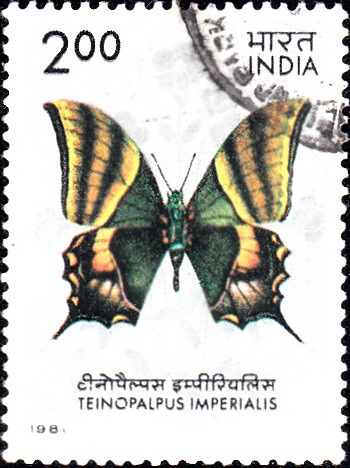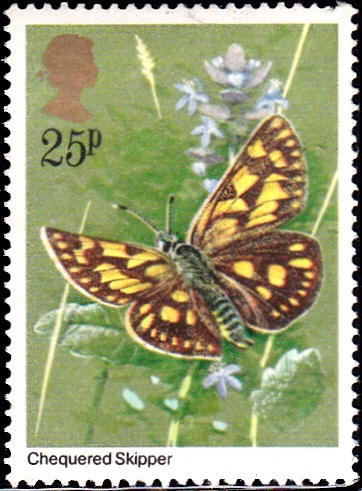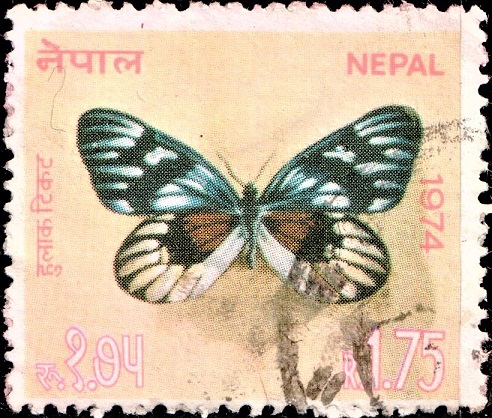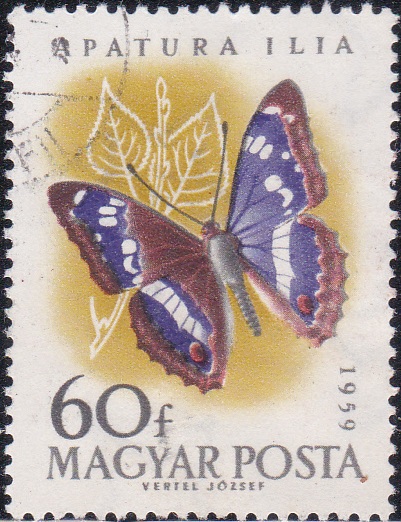
Butterflies of India 1981
Complete Set of 4 nos of postage stamp on the Indian Butterflies : Stichophthalma camadeva, Cethosia biblis, Cyrestis achates and Teinopalpus imperialis :



 Issued by India
Issued by India
Issued on Oct 20, 1981
Description of Designs : The design of the stamp is based on paintings by M. Mandal and depict Stichophthalma camadeva (35p), Cethosia biblis (50p), Cyrestis achates (100p) and Teinopalpus imperialis (200p) butterflies. First day cover designed by M. Mandal shows Papilio buddha. Cancellation was designed by Charanjit Lal.
Type : Stamps, Postal Used
Colour : Multicolour
Denomination : 35, 50, 100 & 200 Paise
Overall size : 3.91 x 2.90 cms.
Printing size : 3.55 x 2.54 cms.
Perforation : 13 x 13
Paper : Unwatermarked adhesive gravure stamp paper
Number printed : 20,00,000 each
Number per issue sheet : 35
Printing process : Photogravure
Printed at : India Security Press
About :
- Butterflies and moths belong to the order Lepidoptera (derived from the Greek words Lepis meaning scale and pteron meaning wing) under the class Insecta which is one of the largest classes of the animal kingdom. The first vague traces of these insects occur in the Cretaceous period (about 135 million years ago), and they appeared as a well developed order in the Tertiary era (about 65 million years ago). The Lepidoptera comprise about 220 thousand species of which nearly 45 thousand are butterflies.
- There is no region on earth that can offer a richer variety of butterflies than the tropics. The tropical forests, profusely adorned with elegant grasses, varieties of beautiful flowers amidst the verdant foliage are the haven of some of the most resplendent and exquisitely fascinating butterflies.
- Few others insects can boast of wings as large or as beautiful as those of some of the butterflies, their soul and their very existence seem to be in their wings. According to the American naturalist, Donald Culross Peattie, “Man with all his looms and dyes cannot create anything half so exquisite as a butterfly’s wing“. At the same time butterflies are among the weakest creatures on earth and can exert little force against their enemies. Nature therefore has provided them with an ample measure of wiles which they use for survival. “Protective resemblance” and “mimicry” are two such specialisations resorted to by butterflies and moths for self preservation. The most dramatic example of protective resemblance is seen in the beautiful Kallima butterfly which at rest looks like a decayed leaf clinging to the stem. The Viceroy butterfly mimics the inedible Monarch to escape from predators.
- The sublime beauty of these winged wanderers with their endless variety of hues and patterns has provided the theme for poetry and lore of both East and West. Their grace and beauty have inspired bards and artists of all ages to capture their essence in poetry and art. It is unfortunate, however, that many species of butterflies are in danger of extinction due to the ruthless devastation of their habitat by man. It is with a sense of grave concern for them that the P & T Department brings out a set of stamps on four of the several species of butterflies endemic to the Indian Subcontinent.
- 1. Stichophthalma camadeva. This lovely large butterfly, sometimes referred to as the ‘Northern Jungle Queen‘, measures 90 square centimeters in good specimens. It frequents the forested hilly regions of Sikkim from May to September. Being powerful, Camadeva holds its own against small predators. The markings and colours on its wings are predominantly shades of brown on the upperside and yellow on the under. Though normally conspicuous, they provide camouflage near the ground and among the dense vegetation where it flies.
- 2. Cethosia biblis. This glorious butterfly is popularly known as the ‘Red Lace Wing‘ because of the intricate patterns on its wings. It is found in Andaman and Nicobar Islands, Assam, Sikkim and the adjoining regions, at elevations up to 2100 meters. From March to December, and abundantly during the wet weather, it is seen on flowers within forests and along their borders at river edges. An inedible species, it has a fearless demeanour and indulges in the luxury of slow flight, during which it flashes its underside warning colours of red and orange at any predator. The food plant is the passion-flower, whose blooms are as gorgeous as the butterfly itself.
- 3. Cyrestis achates. This is a well known number of the ‘map‘ butterflies, so named because the wing-markings simulate the lines of latitude and longitude of a world map. It settles on the underside of leaves with wings spread like a grounded aeroplane, a habit common in a moth but unusual in a butterfly. It lays eggs on the underside of banyan and related species of Ficus, on which the larvae feed in large groups. This species is common in Karnataka and the adjoining regions.
- 4. Teinopalpus imperialis. Popular as Kaiser–e–Hind, this butterfly is a renowned member of the Swallowtail group so called because the protuberances on the hindwings remind us of the forked tail of a swallow. A swift flier, the double-brooded ‘Kaiser-e-Hind‘ can be seen from April to May again from August to September in Sikkim, Assam and the adjoining areas at altitudes of 1,980 to 3,050 metres. It prefers open mountains surrounded by thick forests, and often keeps to tree-tops, through on a fine sunny day it may come down in the early and mid-morning. The females, with a wing-span of 11-12 cms., are slightly larger than the males and have three wing-tails instead of one. The food-plants are Daphne species, including the Nepal paper-plant.
- The first Day Cover depicts Papilio buddha, or the Malabar Banded Peacock, a member of the Swallowtail group. Unlike the closely related Indian species Papilio blumei, ‘ranked among the most delightful butterflies of the world’, the Buddha renounced showmanship and is much admired by butterfly-lovers. It flies quickly and high, and can be seen throughout the year, except in June and July, in the hill regions of southern India. The green caterpillars feed on Zanthoxylum rhetsa.
- Consultant for text : S. N. Tata.







